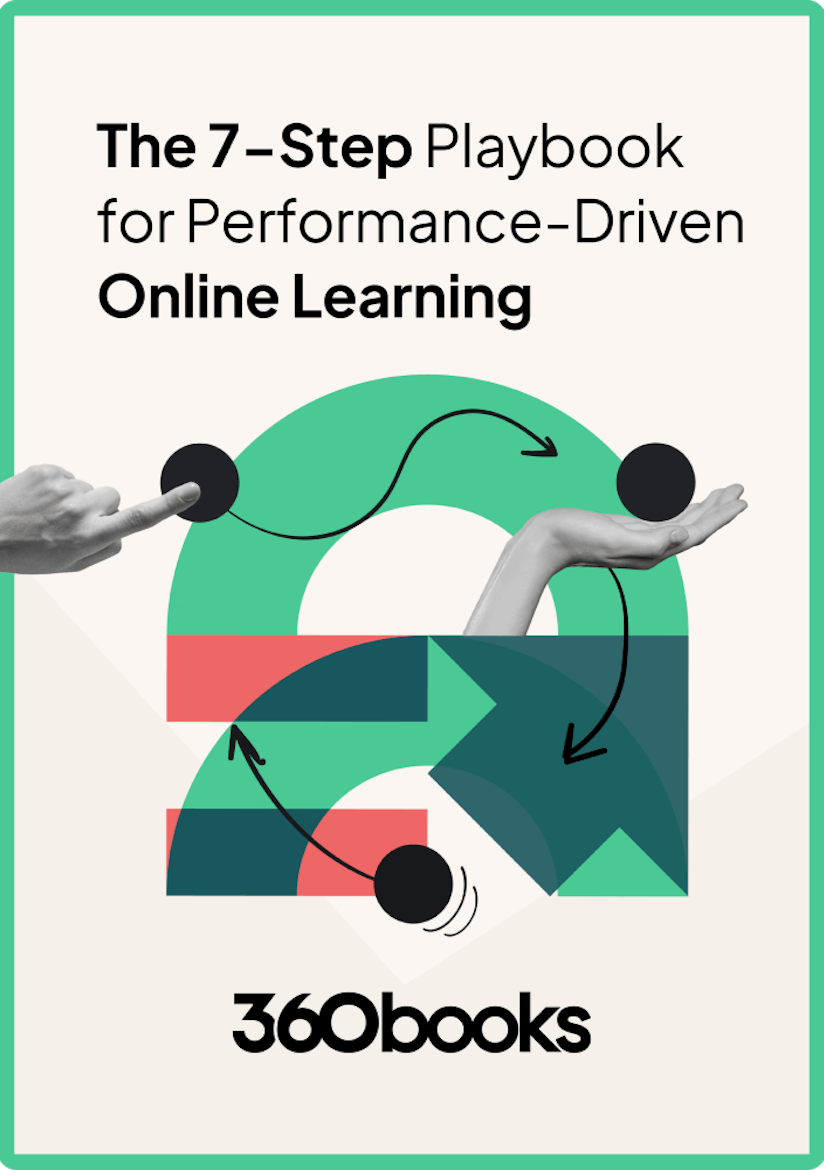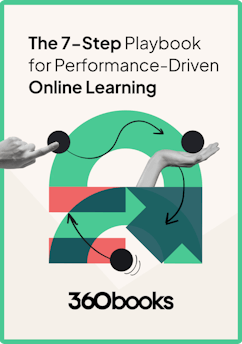Chapter 2: The Right Way to Scale Online Learning
Providing development at scale has led us to rely heavily on vast off-the-shelf content libraries.The reasoning is, the bigger the offering, the more likely everyone will be able to find something they need. After all, most vendors offer some level of personalization; if your learners complete a course on ‘Accounting 101’, your platform can probably serve up, thanks to an algorithm, something it considers to be similar, and hopefully just as useful.
But there are a few problems with this common approach.
First, no matter how artfully done, OTS content will never be as contextually relevant as courses crafted by an in-house expert.
First, no matter how artfully done, OTS content will never be as contextually relevant as courses crafted by an in-house expert. Let’s take a course on Accounting as an example: since no OTS course can know your particular billing system, deadlines around fiscal years, and in-house processes, it would only be able to instruct in hypotheticals, outlining in detail all the possibilities, but leaving the employee still none-the-wiser as to what to do next.
Off-the-shelf content does have its place, of course – but if it’s the backbone of your online learning, it’s not going to be anywhere near as impactful as it could be.
And what about personalized algorithms? If they’re anything like Netflix or Amazon, they aren’t going to serve up content in the moment of need – the tech just isn’t there yet.
Moreover, these are the kinds of courses learners often find to be lengthy, dry, and lacking the ability to ask questions or receive feedback. They’re often also out of date, a fact which, when spotted by learners, jeopardizes the credibility of the project.
Then, the nail in the coffin: if they’re implemented without any framework for gauging their impact, or if they’re used as a band-aid solution to a problem that runs much deeper, there’s no way L&D teams will be able to demonstrate their ROI to the business, whether learners find them to be effective or not.
But these obstacles don’t mean that scaling online learning is impossible – the key lies in identifying, capturing, and disseminating subject-matter expertise.
SMEs: The underutilized key to successful online learning at scale
Subject-matter experts (SMEs) hold the valuable, contextual knowledge that is the lifeblood of any truly impactful online learning course. Instead of “Accounting 101”, you can offer, “5 Accounting Problems Recently Experienced in Your Team, Resolved by a Known Expert, Using the Tools, Processes, and People You Know.” There’s really no comparison.
Subject-matter experts (SMEs) hold the valuable, contextual knowledge that is the lifeblood of any truly impactful online learning course.
And, according to our surveys, these SMEs are an abundant, but underutilized, resource, just waiting to be tapped into: In the US, 92% of learners say they have valuable knowledge to share, but only 60% have said they have been asked to share it – and only about a quarter collaborate regularly with L&D teams on content creation.

Encouragingly, learners also highly value being recognized as experts at their job – which is greatly facilitated by contributing to course creation for peers: in the U.S., when asked to rank certain aspects of work in terms of importance (out of 8 options), learning new skills was tied at number one, along with frequent compensation increases. Third place was “being recognized as an expert at my job”.

Employees agree they have valuable knowledge to share, and would be proud to be perceived as an expert by their colleagues. The raw material is ready and waiting for L&D teams to draw on.
Pivoting to rely on in-house experts instead of generic courses is an essential part of creating online learning that can scale. But you still need to enable learners to ask and answer questions, ensure courses are engaging, and that they can be consumed at the convenience of the learner, asynchronously. After all, these were all the elements employees told us they valued in the online learning supplied by their employers.
The methodology that best answers all of these specifications is collaborative learning.
Collaborative learning brings it all together
Put simply, collaborative learning is a methodology where employees share their knowledge and expertise, teaching and learning from one another at the same time. A group learning approach enhances the learning experience by capitalizing on each employee’s skills, ideas, and institutional knowledge. It leverages social interactions such as on forums to maximize learning and engagement.

Nick Hernandez, CEO of 360Learning – the pioneer of the collaborative learning approach – spells out the history and practical applications of this methodology in his recent book, “Collaborative Learning: How to upskill from within and turn L&D into your competitive advantage.” The full work is for purchase in various bookstores, but you can download a free chapter here if you’re interested in getting to know the methodology in detail.

Is your online learning boring? Not anymore.
By providing your contact info, you agree to receive communications from 360Learning. You can opt-out at any time. For details, refer to our Privacy Policy.
Collaborative learning is often confused with cooperative or social learning, where students work together in small groups to solve a problem or master a concept. Cooperative learning is a useful learning tool but difficult to deploy on an organizational scale. It's most commonly used in high school and higher education settings. Like cooperative learning, collaborative learning encourages higher-level thinking, problem-solving, and teamwork.
Collaborative learning is easy to scale digitally, and is the most effective way of closing proprietary skills gaps.
But crucially, collaborative learning is easy to scale digitally, and is the most effective way of closing proprietary skills gaps – which, as we’ll see in the next section, is particularly urgent.


